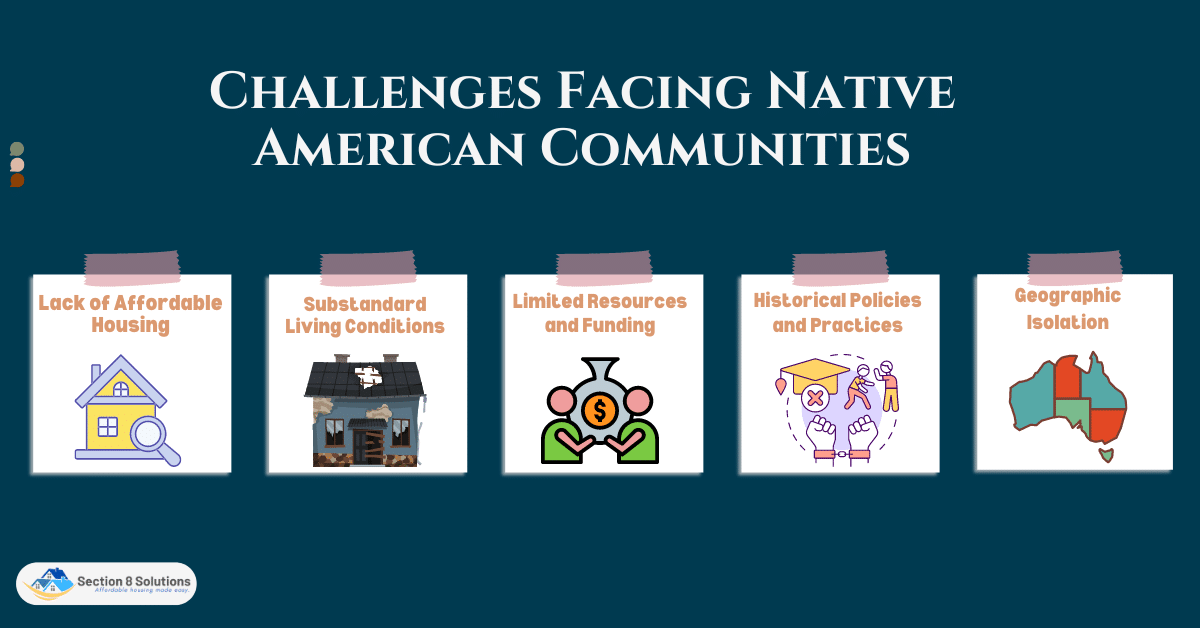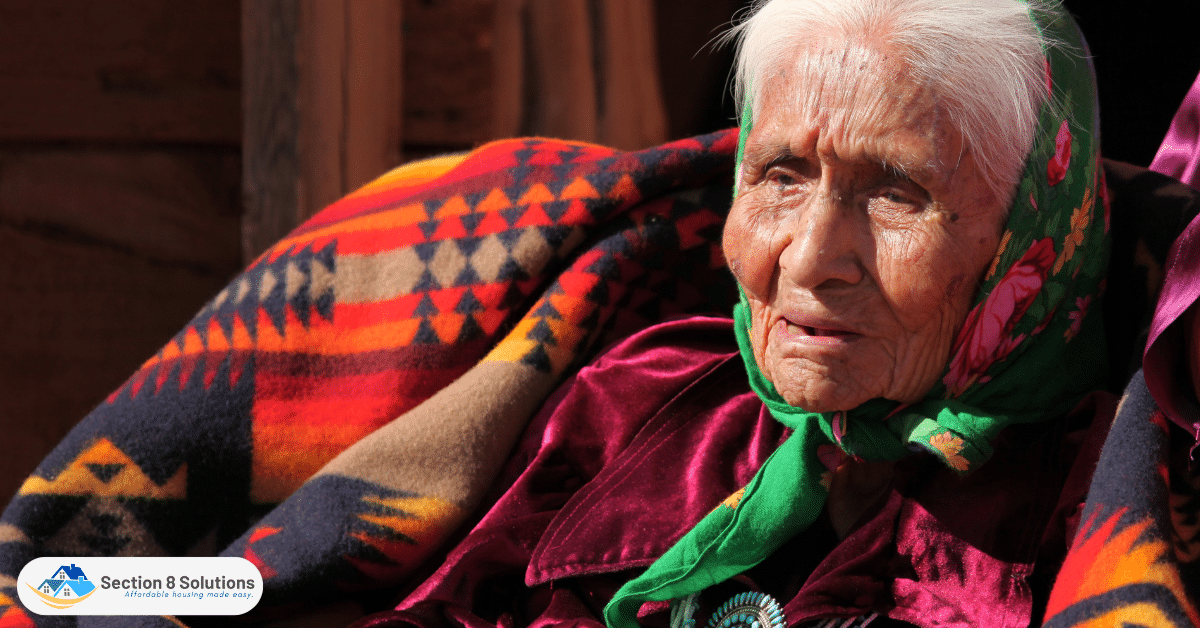The Housing Choice Voucher Program (Section 8 Housing) helps low-income families, especially Native American communities, afford safe and decent housing. This initiative helps low-income people afford homes. Native American communities can improve their quality of life by receiving Section 8 Housing funds.
In this blog, we will explore the importance of Section 8 Housing for Native American communities, the specific programs available to them, and how they can navigate the application and maintenance process.

Understanding Section 8 Housing
Section 8 Housing, also known as the Housing Choice Voucher Program, helps low-income families, seniors, and disabled people rent. The program helps them afford safe, decent private rental homes. Tenant- or project-based Section 8 programs. Any qualifying housing unit can receive tenant-based rental help.
This gives tenants more freedom to choose their residence. Project-based programs provide rental assistance for a specific housing unit controlled by a public housing agency or private landlord. Section 8 Housing requires income eligibility. Applicants must have a household income below 50% of the local median. Local income needs may vary. The whole household gross income is subtracted from medical and childcare expenses to calculate income
Citizenship, credit, criminal, and rental histories may also be required. Candidates must also need rental help and follow program guidelines. Section 8 vouchers cover the rest of the rent, however, residents must pay 30% of their income.

Challenges Facing Native American Communities
When it comes to housing, communities that are comprised of Native Americans confront a lot of issues. The following are examples of some of the most urgent problems:

1. Lack of Affordable Housing
The lack of affordable housing is a significant challenge for many Native American communities. In many cases, the cost of housing in these communities is much higher than what residents can afford based on their income. This can lead to overcrowding, with multiple families or individuals living in a single unit, which can compromise living conditions and lead to a higher risk of illness and disease.
Furthermore, the shortage of affordable housing can result in individuals and families experiencing homelessness or having to move away from their communities in search of more affordable options. This can lead to a loss of cultural heritage and community ties, as well as the disruption of important social networks.

2. Substandard Living Conditions
Substandard living conditions are another significant challenge faced by many Native American communities. Housing units may be overcrowded, with multiple families or individuals sharing a single unit. This can lead to issues such as lack of privacy, noise pollution, and a higher risk of illness and disease.
Furthermore, many housing units may have inadequate plumbing and electrical systems, which can lead to issues such as mold growth, leaks, and electrical hazards. Poor ventilation can also lead to issues such as poor air quality, which can exacerbate respiratory conditions and other health issues.
3. Limited Resources and Funding
Limited resources and funding are significant challenges faced by Native American communities when it comes to improving their housing options. The federal government is responsible for funding housing programs for Native American communities, but this funding is often limited and insufficient to meet the demand for affordable and safe housing. Additionally, other challenges such as geographical isolation and limited infrastructure can also make it difficult for communities to access the resources and support needed to address their housing challenges.
4. Historical Policies and Practices
Historical policies and practices have had a significant impact on Native American housing. The forced relocation of Native American communities to reservations and the implementation of the Indian boarding school system disrupted traditional housing patterns and cultural practices.
Additionally, the federal government’s policies of assimilation and termination in the mid-20th century resulted in the loss of tribal land and resources, making it even more difficult for communities to address their housing challenges.
Discrimination in housing policies and practices has also contributed to the challenges faced by Native American communities, such as exclusion from federal housing programs and redlining. These historical factors have created systemic barriers that continue to affect Native American housing today.

5. Geographic Isolation
Many Native American communities are located in rural areas or on reservations, which can make it difficult to access resources and services.
Addressing these challenges will require a multi-faceted approach that involves increasing funding for affordable housing programs, addressing systemic issues that contribute to housing challenges, and supporting the unique cultural practices and needs of Native American communities.

Section 8 Housing for Native American Communities
Section 8 Housing can be an essential resource for Native American communities in accessing safe and affordable housing. The program provides rental assistance to low-income families, elderly individuals, and people with disabilities, allowing them to afford housing in the private rental market. Indian Housing Block Grant Program and Native American Housing Help and Self-Determination Act are Native American-specific Section 8 programs.
These programs subsidize affordable housing in Native American communities and address their unique housing needs. The Lower Sioux Indian Community in Minnesota has a successful Section 8 Housing program. The Native American Housing Aid and Self-Determination Act funded 30 new homes and 20 rehabs for the community, providing safe, affordable housing.

Applying for Section 8 Housing
The application process for Section 8 Housing typically involves filling out an application and submitting it to the local housing authority. The application will require information about household income, family size, and other relevant information. Once the application is submitted, it will be reviewed to determine eligibility for the program.
To navigate the application process successfully, it’s essential to be prepared and organized. Gather all necessary documents, such as proof of income, social security numbers, and identification, before starting the application. Be sure to read and understand the eligibility requirements and application instructions carefully to avoid common pitfalls.
Housing authorities play a critical role in the Section 8 Housing program, administering the program and working with landlords to provide rental assistance to eligible families. In Native American communities, housing authorities may be run by tribal governments or other organizations and may have specific programs and services tailored to the needs of the community.
To work effectively with housing authorities, it’s essential to communicate clearly and promptly and provide any additional information requested in a timely manner. Maintaining good communication with the housing authority can help to ensure a smooth and successful application process.

Maintaining Section 8 Housing
Section 8 Housing is a vital resource for low-income families to secure safe, decent, and affordable housing. However, maintaining Section 8 Housing requires cooperation and communication between tenants and landlords. In this section, we’ll discuss the responsibilities of both parties, the rules, and regulations that tenants must follow, and provide tips for addressing issues that may arise during the tenancy.
Responsibilities of Tenants and Landlords
As with any rental agreement, Section 8 Housing tenants and landlords have specific responsibilities. Tenants are responsible for paying their portion of the rent, maintaining the unit in good condition, and following program rules and regulations. Landlords are responsible for providing safe and decent housing, ensuring that the unit meets program requirements, and following program rules and regulations.
Rules and Regulations for Tenants
Tenants must take care of their units. This entails maintaining the unit clean and free from tenant carelessness. Damages committed by tenants or guests must be repaired. Tenants must not commit crimes. Drugs, theft, and other crimes that endanger others are included. Tenants who disobey this rule risk losing their Section 8 voucher and legal action.
Renters must also keep their household income within the program’s cap. The housing authority must be notified of income or family changes immediately. Rent may be overpaid or underpaid if income or family changes are not reported. Tenants must follow the lease. This includes paying rent on time, not permitting unauthorized occupants, and not making changes without permission. The leasing agreement specifies quiet hours, smoking, and pet policies.

Rules and Regulations for Landlords
As part of the Section 8 Housing program, landlords are also subject to regulations and requirements to ensure that tenants have safe and affordable housing options. Here are some important regulations that landlords must follow:
- The rent amount must be reasonable and within the limits set by the housing authority
- Units must meet health and safety standards, including adequate heating, plumbing, and ventilation
- Landlords must adhere to the lease agreement, which outlines the specific terms of the tenancy
Failing to meet these regulations can result in penalties and even termination from the program. It’s important for landlords to understand and comply with these requirements to maintain their eligibility for the Section 8 Housing program.

Tips for Addressing Issues
Living in Section 8 Housing can provide stability and affordability for families in need. However, it is important to know how to address issues that may arise during the tenancy. This article will provide some tips on how to effectively communicate with landlords and seek assistance from the housing authority when necessary.
- Open and respectful communication with landlords is key to resolving issues in a timely manner.
- Report maintenance issues promptly to the landlord or property manager.
- Follow up with the landlord to ensure the issue is being addressed.
- Seek assistance from the housing authority if the issue is not resolved, as they may have mediation or dispute resolution services available.
By following these tips, Section 8 Housing tenants can address issues in a timely and effective manner, ensuring that they can maintain their housing and continue to receive the benefits of this program. Remember, communication and seeking assistance when needed is key.

Conclusion
Native American communities need Section 8 Housing. These programs improve people’s lives by providing inexpensive, safe, and stable housing. Nonetheless, historical policies and practices and the need for increased resources and funding remain obstacles.
HUD and the National American Indian Housing Council can provide additional information and support (NAIHC). For program details and eligibility, people can contact their local housing authority.












